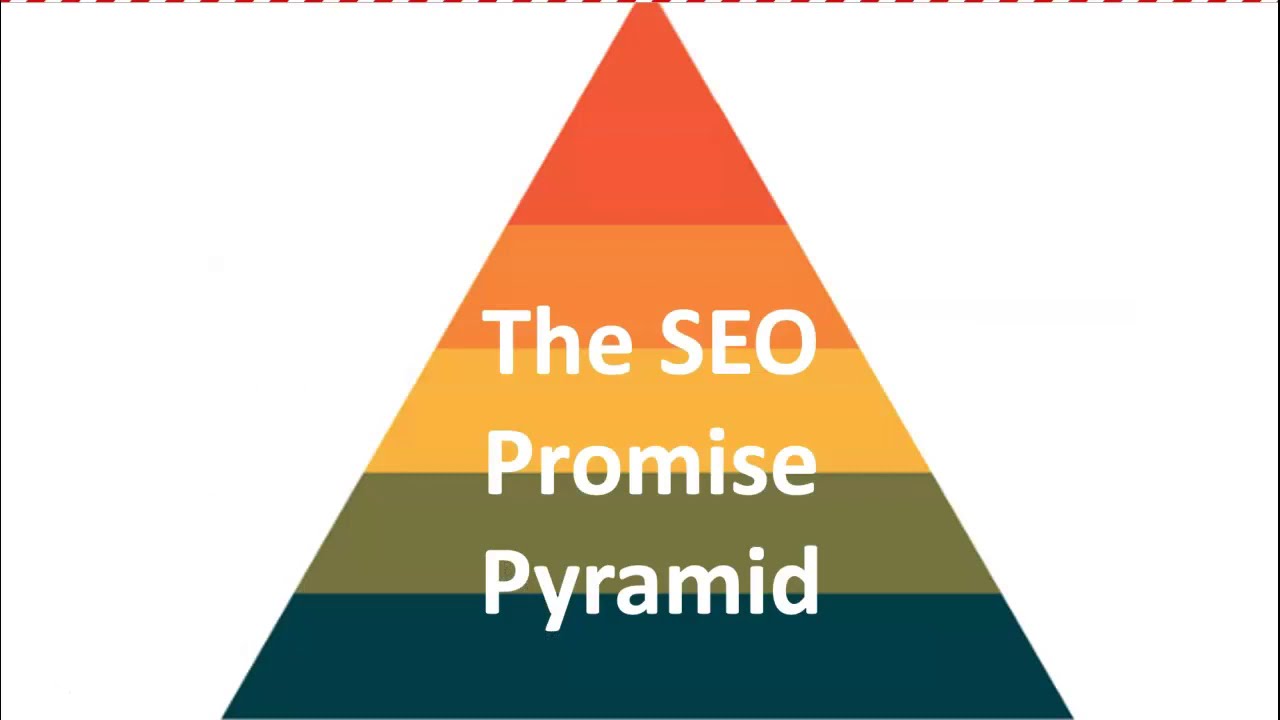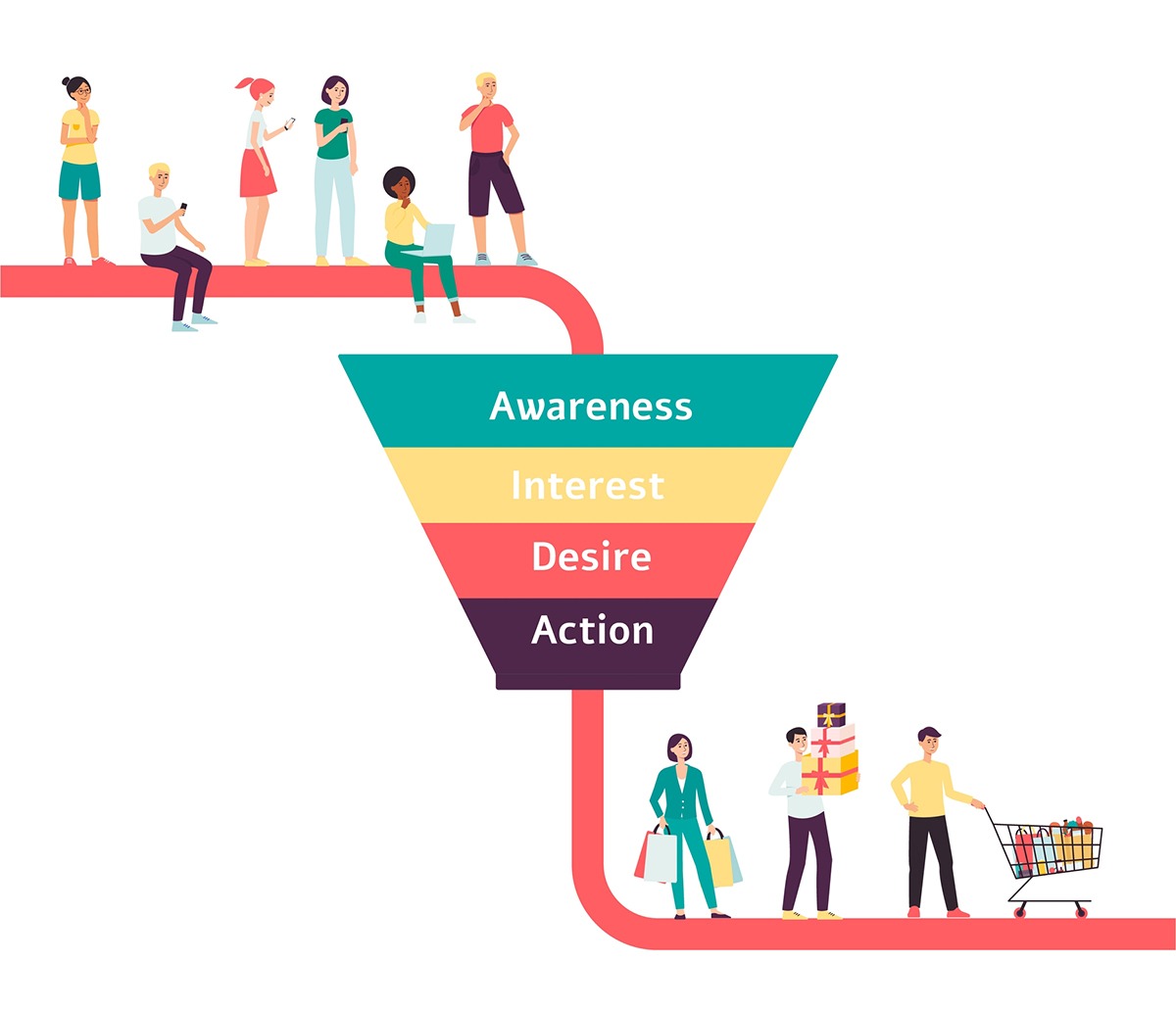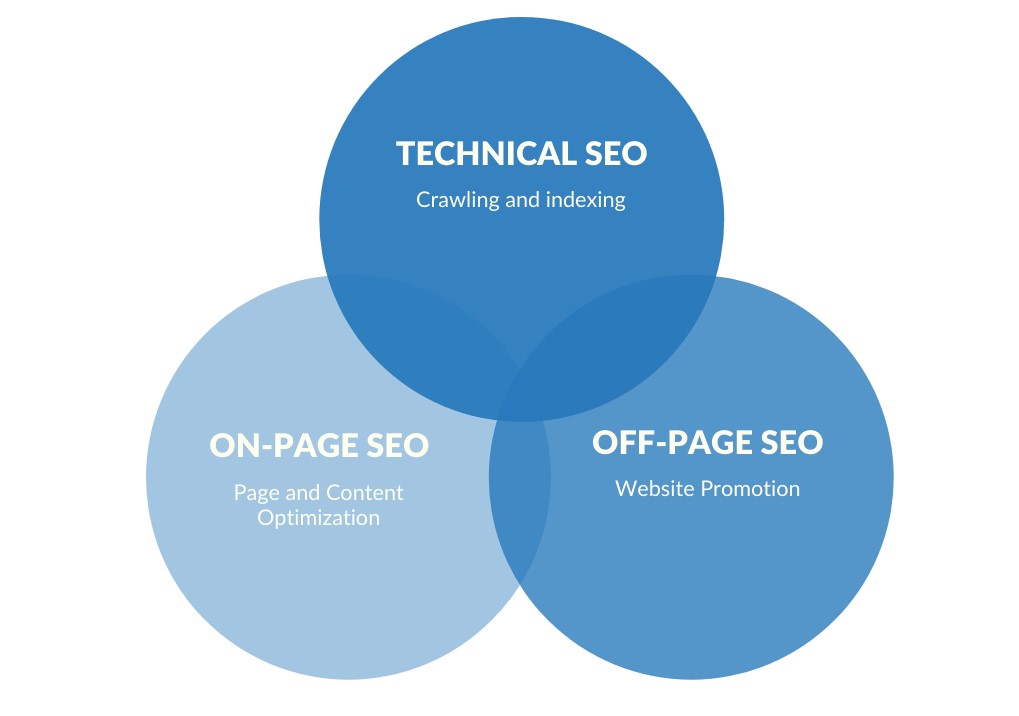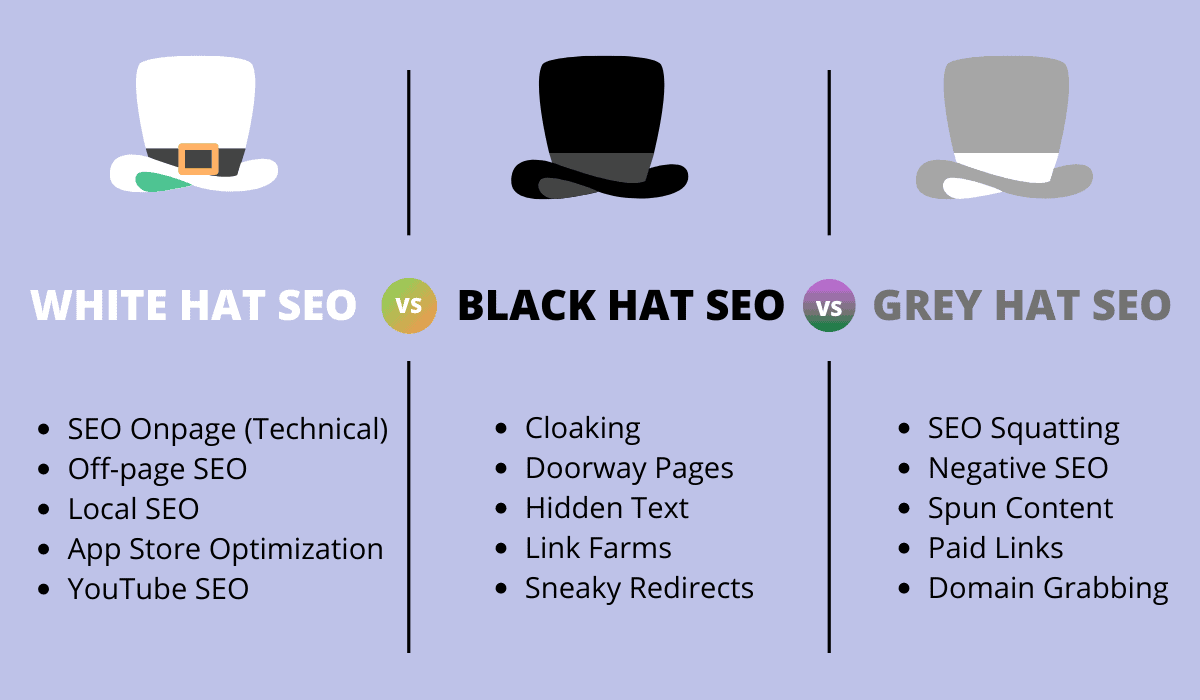In today's digital era, online shopping has taken over the world. People can buy anything from plumbing fixtures to pizza rolls with just a few clicks from the comfort of their homes. As a result, eCommercehas become a focal point for every businessselling products or services. To succeed in this highly competitive online landscape, companies need to focus on web traffic, and that's where Search Engine Optimization(SEO), the SEO process promisecomes into play.
Understanding The Essence Of SEO
SEOis the process of optimizing a website or contentto improve its visibility and ranking in Search EngineResults Pages (SERPs). The ultimate goal is to attract organic traffic and drive conversions. A well-crafted SEO strategycan significantly impact a businessby increasing its online presence and brand visibility. However, SEOis not a one-time fix; it requires continuous efforts to stay relevant and competitive.

The SEO Promise Pyramid: Helping You With The Most Important Aspect of SEO
To achieve success in SEO, you need a clear and comprehensive strategy that aligns with your business goals. This is where the SEO process promise comes into play. The promise revolves around creating, implementing, and optimizing an SEO campaignto ensure that your website ranks highly in search engine results and reaches your target audience organically.
9-Step SEO Process Promise
Here are the 9 steps of the SEO process promise and how each one contributes to the overall success of your SEO strategy.
Align SEO With Business Goals & Define KPIs
The first step in the SEO process promise is to align your SEO efforts with your business goals. Identify what you want to achieve through SEO and set clear objectives. This step involves performing an SEO audit to understand your website's current state and benchmark it against your goals.
During the audit, you'll evaluate various aspects of your website, such as domain name, page factors like headlines and user engagement, content organization and quality, website architecture, inbound links, on-site factors like sitemaps and image optimization, and more. This analysis will help you create a roadmap for your SEO campaign.
Additionally, you need to define Key Performance Indicators (KPIs) to measure the success of your SEO strategy. Some essential KPIs include organic sessions, keyword ranking increases, leads and conversions, bounce rate, pages per session, average session duration, and page load time.
Perform Keyword Research
Keyword research is a fundamental aspect of SEO. It involves identifying the keywords and phrases your target audience uses to search for products or services similar to what you offer. Understanding search intentis crucial during this step to avoid attracting the wrong audience.
To conduct keyword research, brainstorm potential keywords related to your business, products, or services. Use tools like Google's Keyword Planner to discover relevant keywords with high search volume and low competition. Consider long-tail keywords, which are specific phrases that users are more likely to use when they are closer to making a purchase decision.
Keyword research will guide your content creationand optimization efforts, ensuring that your website's content aligns with user search queries.
Define Your Most Valuable Pages
Your website's most valuable pages, often referred to as MVPs, are the ones that drive the most traffic and conversions. Identifying these pages allows you to focus your SEO efforts on optimizing them for better results.
For non-eCommerce sites, MVPs may include the home page, services pages, or pages with valuable offers. For eCommerce sites, MVPs include category and product pages.
To determine your MVPs, consider what your organization is known for and which pages attract the most visitors. These pages are critical for lead generation and attracting qualified traffic.

How To Conduct a Competitive Analysis (FREE Template)
Conduct A Competitive Analysis
In the world of SEO, competition is fierce. Analyzing your competitors' strategies can provide valuable insights and help you outperform them in search engine rankings.
A competitive analysis involves identifying your competitors, analyzing their SEO tactics, evaluating their backlink profiles, content strategies, and social mediapresence. By understanding their strengths and weaknesses, you can identify opportunities and areas where you can differentiate yourself.
Plan For User Experience & Technical SEO
A website's user experienceplays a vital role in SEO success. A well-structured and user-friendly website enhances engagement and encourages visitors to stay longer, reducing bounce rates.
Technical SEOensures that search engines can crawl and index your website effectively. This involves improving website speed, mobile responsiveness, site structure, and schema markup.
A positive user experience and technical optimization create a seamless journey for visitors, increasing the likelihood of conversions.
Consider Your Resources
SEO does not exist in isolation; it impacts various departments within an organization, including marketing, sales, and IT. Assessing your existing resources allows you to leverage internal expertise and align your SEO strategy with existing workflows.
Your sales team can provide valuable insights into customer preferences and target keywords, while your marketing team can create content that resonates with the audience. Your IT team is responsible for ensuring technical aspects are optimized for better performance.
By integrating SEO with your existing resources, you can optimize your budget and achieve better results.
Align Your SEO Strategy With Your Customer Funnel
Your customer funnel outlines the journey a potential customer takes, from awareness to post-purchase. SEO can play a significant role at every stage of this journey.
During the awareness stage, potential customers discover your business through search engines. At the interest stage, they research and visit your website. The decision stage involves evaluating your offerings against competitors, and during the purchase stage, they convert into customers.
By aligning your SEO strategy with the customer funnel, you can tailor your content to match the intent of users at each stage, increasing the chances of conversion.
Report And Set Realistic Expectations
Reporting is essential in SEO to measure progress and identify areas for improvement. Regularly generating reports helps establish consistent and accurate data to gain stakeholders' trust.
However, it's essential to set realistic expectations. SEO is not a quick fix, and results may take time, especially for competitive keywords. Communicate the timeframes and potential outcomes to stakeholders, emphasizing the importance of long-term success and sustainable growth.
Measure And Document Your Strategy
Once your SEO strategy is in place, continuous monitoring and measurement are crucial for success. Track the defined KPIs and document the results regularly. Analyze data to identify patterns, trends, and areas for improvement.
By monitoring and documenting your SEO efforts, you gain valuable insights that inform future optimization strategies, ensuring the ongoing success of your SEO campaign.
The Different Types Of SEO And Their Impact
Each type of SEO brings its unique benefits and strategies to the overall SEO process. Let's explore how the different types of SEO contribute to the SEO process promise.
On-Page SEO
On-Page SEO focuses on optimizing individual web pages to improve their search engine rankings and attract organic traffic. It aligns with the SEO process promise of creating, implementing, and optimizing an SEO campaign. By optimizing on-page elements such as meta tags, headers, content, and URLs, you increase the chances of your website being found by search engines and target audiences.
Off-Page SEO
Off-Page SEO complements the SEO process promise by focusing on activities outside your website that impact its online presence and search engine ranking. Conducting a competitive analysis, as emphasized in the promise, relies heavily on off-page SEO. Building quality backlinks, collaborating with influencers, and leveraging social media improve your website's authority and reputation, enhancing its ranking potential.
Technical SEO
Technical SEOis closely tied to the promise's focus on user experience and technical optimization. It ensures that your website is well-structured, easy to crawl, and provides a seamless user experience. Improving website speed, mobile responsiveness, site structure, and schema markup positively influence search engine visibility and user satisfaction.
Content SEO
Content SEO aligns perfectly with the promise's emphasis on providing valuable content to attract organic traffic. By optimizing your content with relevant keywords and internal linking, you ensure your website ranks well for search queries and provides value to users.
Global SEO
Global SEO expands on the promise's approach, catering to a global customer base. Optimizing content for different languages, conducting international keyword research, and creating localized content are essential steps in a comprehensive SEO campaign that aims to attract audiences worldwide.
Local SEO
Local SEO is critical for businesses targeting specific geographic areas. As part of the promise, businesses must align their SEO strategy with their customer funnel. Local SEO optimizes your website and online presence to appear in local search results, making it relevant to users seeking nearby products or services.
White Hat SEO
White Hat SEO aligns perfectly with the promise's focus on ethical and legitimate SEO practices. By creating high-quality content, improving user experience, and using proper optimization techniques, White Hat SEO ensures a comprehensive and ethical SEO strategy for sustainable, long-term success.
Black Hat SEO
On the other hand, Black Hat SEOcontradicts the principles of the SEO process promise. It involves unethical and manipulative tactics that can lead to severe penalties and damage the website's reputation, resulting in short-term gains at the cost of long-term success.
Gray Hat SEO
Gray Hat SEO falls somewhere between White Hat and Black Hat SEO. It involves practices that may not be explicitly against search engine guidelines but could be considered questionable or risky. For example, using private blog networks (PBNs), buying expired domains for link building, or keyword stuffing in moderation might be considered Gray Hat tactics.
While Gray Hat SEO might offer some short-term advantages, it can be risky, as search engines are continually updating their algorithms to detect and penalize such practices. What may seem acceptable today might be penalized tomorrow.
People Also Ask
How Is SEO A Long-Term Strategy?
SEO is a steady and detailed approach that brings results over months or even years, ensuring a strong online presence and brand reputation.
Why Is SEO A Long Process?
SEO requires ongoing maintenance and continuous efforts to adapt to algorithm updates and maintain optimal website performance and rankings.
What Are Long-Tail Keywords In SEO?
Long-tail keywords are specific phrases of three to five words, targeting niche demographics and reflecting how people make online queries. They are less competitive and can attract more relevant traffic to your website.
Conclusion
Search Engine Optimization (SEO) is an indispensable aspect of any successful online presence. By understanding the SEO process promise and the different types of SEO, including White Hat, Black Hat, and Gray Hat SEO, you can craft a comprehensive and effective strategy that aligns with your business goals and drives organic traffic to your website.
Remember, SEO is an ongoing process that requires continuous monitoring, analysis, and adaptation. With the right approach and dedication, you can master the art of website optimization and stand out in the digital landscape.


